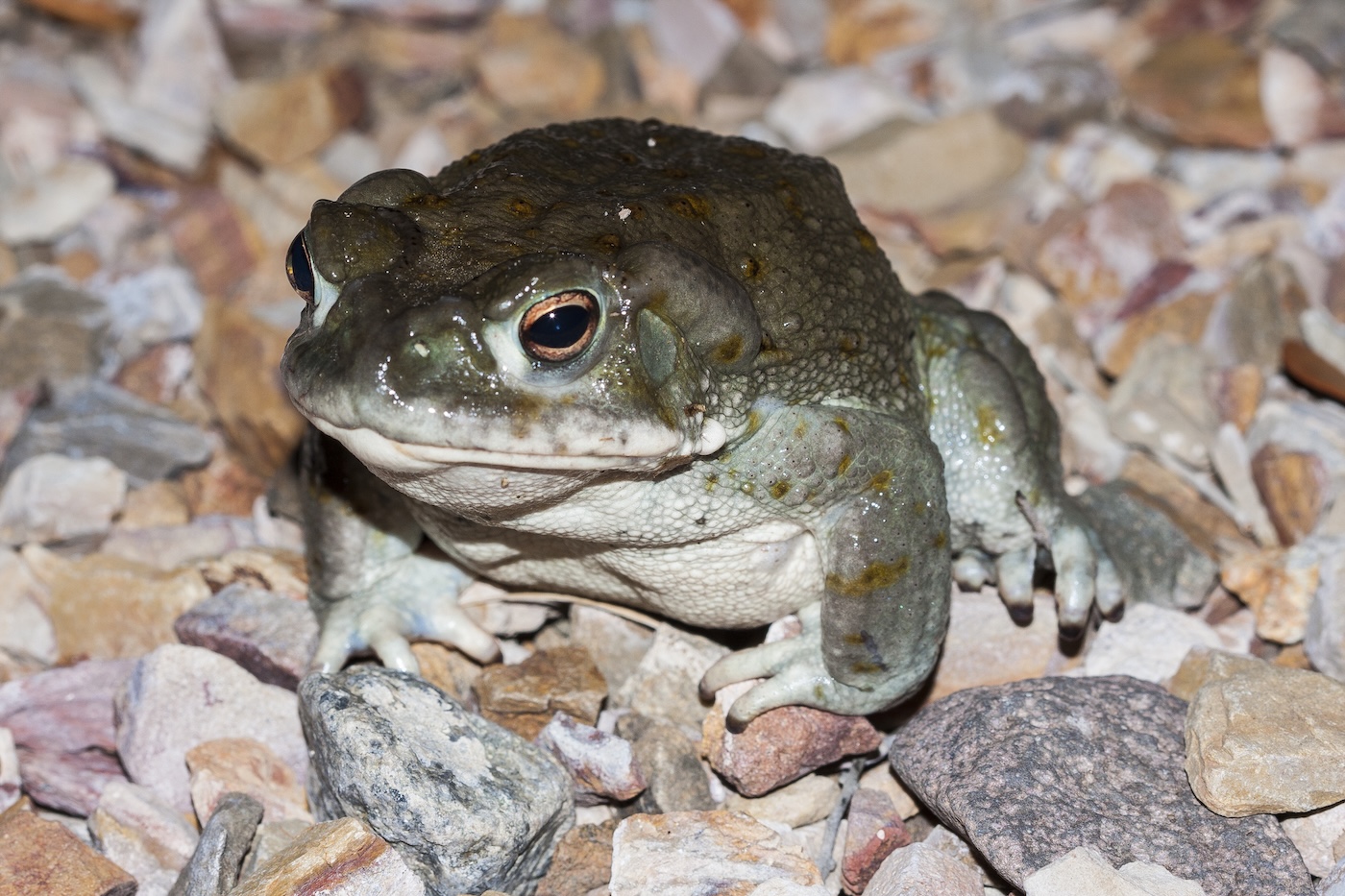Don’t Lick The Toad From ‘Friendship’
In the movie, Tim Robinson seeks a psychedelic experience from an unusual source. Herpetologists want others to just say no.
This is an article from our newsletter “Science Goes To The Movies.” To get a story about the science of popular movies and TV in your inbox every month, subscribe here.
“Friendship” is the story of a friend breakup between two dudes that leads one to spiral into ruin. Led by comedian Tim Robinson (“I Think You Should Leave,” “Detroiters”) and Paul Rudd (“Ant-Man,” “This is 40”), the film delves into the absurdities of friendship among heterosexual men. Both characters are fascinated by the natural world—they bond while foraging for mushrooms and exploring an underground sewer system. As the relationship unravels, Robinson’s character seeks out ayahuasca in an effort to find inner peace, but is instead offered a drug secreted from the skin of a toad.
Actually, there is a real toad that secretes a psychedelic toxin. And the U.S. National Park Service does NOT want anyone licking it.
In the movie, Robinson’s character licks the fictional “Buffalo River toad,” but the real life psychedelic creature is the Colorado River toad (Incilius alvarius), also called the Sonoran Desert toad. These toads live in Arizona and northwestern Mexico and they convert bufotenine—a compound produced by many toad species—into a powerful psychedelic toxin called 5-MeO-DMT, also known as the “God molecule.”

Its effects are extremely potent—users say 5-MeO-DMT quickly induces a roughly 20-minute experience that temporarily dissolves the ego. The practice of drying and smoking the substance has gained traction, particularly at psychedelic retreats. Some users, Hunter Biden included, say using it helped them cope with addiction, depression, and anxiety, but peer-reviewed research on the compound is limited and very preliminary. 5-MeO-DMT is currently a Schedule I substance and is illegal to use under federal law.
Robert Villa, president of the Tuscon Herpetological Society, thinks that the anecdotes about 5-MeO-DMT’s potential to treat certain mental health conditions are compelling, but the science needs to catch up.
“ We don’t really know the chemical reasons” that this drug can help in treating mental health conditions like addiction, he says. “We know that it happens, but it’s not a silver bullet.”
Licking Colorado River toads, as shown in the film, is dangerous. These animals also secrete toxins that inhibit heart function and can “cause cardio distress,” Villa says. “ Licking the toad will make you very sick.”
The interest in psychedelic uses of “toad venom” (it’s actually a poison) is raising eyebrows among those concerned about the amphibian’s welfare. Anecdotal reports indicate that poaching may be increasing, though it’s hard to quantify, as are toad populations. The species is classified as imperiled in its small range in New Mexico, according to the Lower Colorado Multi-Species Conservation Program, but stable in Arizona.

Villa’s research shows that hundreds, maybe even thousands, of toads are poached per year, which could quietly destabilize their overall population. We might not notice until urgent action is needed. “Milking” 5-MeO-DMT from toads by forcing them to secrete the substance also causes harm.
The toads “ are not often returned to where they’re caught and they often die because they’re disoriented, they’re lost,” Villa adds.
Scientists are testing synthetic versions of 5-MeO-DMT, and while these alternatives are relatively easy to make, they might not completely cut off the demand, especially for those enticed by the toad’s “natural medicine” connotations. Villa says that the practice of using “toad” will likely not go away, but he hopes that an artificial substitute for the drug could be a more ethical solution.
“Basically we have a species, which is being harmed [for the benefit of] a wellness market and psychedelic adventurism,” he says.
I laughed very hard for the entire 100-minute run of “Friendship,” mostly because I love Tim Robinson’s comedy. (Check out “Detroiters” or “I Think You Should Leave” to get a sense of his high-energy, absurd, socially stressful humor.) I still quote the movie several weeks after watching it.
You can watch “Friendship” in theaters now.
Correction: This article originally referred to the toad’s secretion as a venom. While it is colloquially referred to as “toad venom,” it is technically a poison, as it is not delivered through a bite or sting. The story has been updated.
Emma Lee Gometz is Science Friday’s Digital Producer of Engagement. They write SciFri’s “Science Goes To The Movies” series and are a journalist and illustrator based in Queens, NY.